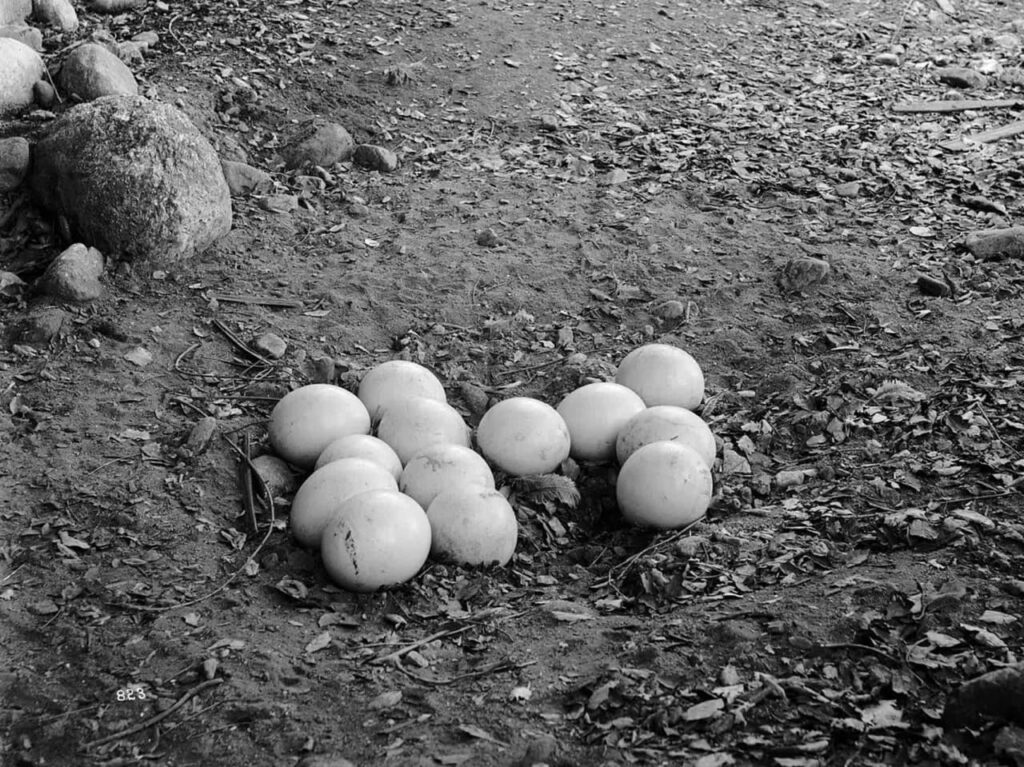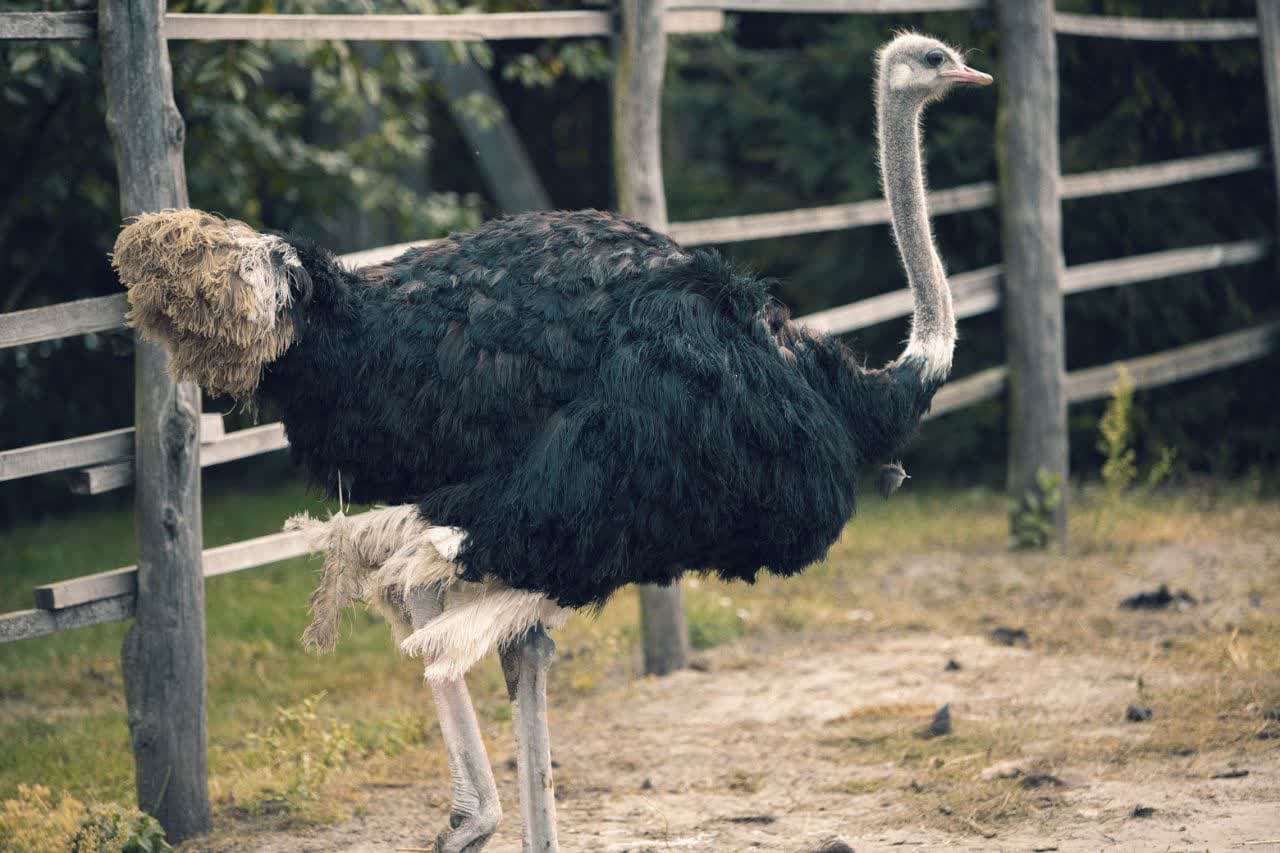The ostrich egg is a marvel of nature, renowned for its impressive size, nutritional richness, cultural significance, and versatile uses. Here’s a detailed exploration of this remarkable natural wonder:
Impressive Size and Structure:
Ostrich eggs are the largest eggs laid by any living bird species, weighing approximately 1.4 kilograms (3 pounds) on average. Their size is truly remarkable, dwarfing the eggs of other bird species. Ostrich eggs have a thick, hard shell that is surprisingly strong and durable, providing protection for the developing embryo inside.

Nutritional Richness:
Despite their large size, ostrich eggs are prized for their nutritional content. A single ostrich egg contains the equivalent of about 24 chicken eggs in terms of volume, making it a rich source of protein, vitamins, and minerals. Ostrich eggs are particularly high in protein and provide essential nutrients such as vitamin A, vitamin D, and calcium. They are also lower in cholesterol compared to chicken eggs.
Cultural Significance:
Ostrich eggs have held cultural significance for various societies around the world for centuries. In many African cultures, ostrich eggs are used as symbols of fertility, abundance, and protection. They are often incorporated into traditional rituals, ceremonies, and decorative arts, serving as symbols of prosperity and well-being. Ostrich eggshell fragments have been found in archaeological sites, indicating their use in ancient human cultures.
Versatile Uses:
Ostrich eggs have a range of practical uses beyond their symbolic and nutritional value. In some cultures, the empty shells are intricately carved and decorated to create ornamental objects, decorative lamps, or ceremonial vessels. The durable nature of ostrich eggshells makes them ideal for crafting and artistic expression. Additionally, ostrich eggs are sometimes used as canvas for intricate artworks, showcasing the creativity and skill of artists.
Hatching Cycle:
The hatching cycle and conditions of ostrich eggs are fascinating and critical for the successful development of the embryo. Here’s an overview:
Hatching:
Incubation Period: Ostrich eggs typically have an incubation period of around 42 to 46 days. During this time, the eggs are kept warm and humid to facilitate embryo development.
Egg Rotation: Ostrich eggs require regular rotation during incubation to prevent the embryo from sticking to the shell membrane and to ensure even heat distribution. This mimics the natural process of ostrich parents rotating their eggs in the nest.
Temperature and Humidity: The optimal temperature for incubating ostrich eggs is around 97 to 99 degrees Fahrenheit (36 to 37 degrees Celsius). Humidity levels should be maintained at around 40 to 50 percent during the first three weeks of incubation and then increased to 60 to 70 percent during the final stages.
Candling: Candling is a process where a bright light is shone through the egg to assess the development of the embryo. This is typically done around day 14 of incubation to check for signs of viability and growth.
Hatching: Ostrich chicks usually begin to hatch around day 42 of incubation. The hatching process can take several hours, during which the chick uses its egg tooth to break through the shell. Once hatched, the chicks are initially weak and vulnerable but quickly gain strength.

Conditions:
Nesting: Ostriches typically lay their eggs in communal nests, with multiple females contributing eggs to a single nest. The nests are shallow depressions in the ground lined with grass, leaves, and other vegetation.
Protection: Ostrich parents play a crucial role in protecting the eggs and chicks during incubation and after hatching. They take turns incubating the eggs and fiercely defend the nest from potential threats such as predators.
Environmental Factors: Ostrich eggs are sensitive to changes in temperature and humidity, as well as disruptions in the incubation process. Factors such as excessive heat, cold, or fluctuations in humidity can impact the viability of the eggs and the health of the developing embryos.
Predation: Ostrich eggs are vulnerable to predation from various animals, including jackals, hyenas, and birds of prey. Ostrich parents employ various strategies to defend the nest and deter predators, including aggressive displays and vocalizations.
Overall, the hatching cycle and conditions of ostrich eggs are carefully managed to maximize the chances of successful hatching and ensure the health and vitality of the chicks.
Culinary Delicacy:
Ostrich eggs are also prized for their culinary potential, with their large size making them suitable for various dishes and recipes. They can be used to make omelets, frittatas, quiches, and other egg-based dishes on a grand scale. Ostrich eggs have a rich and creamy texture, similar to chicken eggs but with a slightly milder flavor. Their unique taste and texture make them a sought-after delicacy in many culinary traditions.
Famous Dishes of Ostrich Egg
Ostrich Egg Omelette:
One of the most popular ways to enjoy ostrich eggs is by making a giant omelette. Due to the large size of ostrich eggs, a single egg can yield a massive omelette that can feed several people. The omelette can be customized with various fillings such as cheese, vegetables, and meats, making it a hearty and satisfying breakfast or brunch option.
Ostrich Egg Quiche:
Ostrich egg quiche is another delicious dish that showcases the creamy texture and rich flavor of ostrich eggs. The egg custard base is mixed with cheese, vegetables, and herbs, then poured into a pie crust and baked until golden and set. Ostrich egg quiche makes for an elegant and impressive dish for special occasions or brunch gatherings.
Ostrich Egg Scramble:
Scrambled eggs made from ostrich eggs are a decadent treat that elevates the classic breakfast staple to new heights. The eggs are gently scrambled with butter or oil until fluffy and cooked to perfection. Seasonings such as salt, pepper, and herbs can be added to enhance the flavor. Ostrich egg scrambles are often served with toast or potatoes for a hearty breakfast or brunch.
Ostrich Egg Frittata:
Frittatas made with ostrich eggs are hearty and filling dishes that are perfect for any meal of the day. The eggs are combined with sautéed vegetables, meats, and cheese, then baked until golden and set. Ostrich egg frittatas can be served hot or cold and are ideal for picnics, brunches, or as a main course for dinner.
These are just a few examples of the delicious dishes that can be made using ostrich eggs. With their rich flavor, creamy texture, and impressive size, ostrich eggs add a unique and luxurious touch to any meal. Whether enjoyed on their own or as part of a larger recipe, ostrich eggs are sure to impress with their culinary versatility.
Conclusion
In conclusion, the ostrich egg is truly nature’s giant treasure, revered for its size, nutritional richness, cultural significance, and versatile uses. Whether admired for its symbolic meaning, artistic beauty, or culinary delights, the ostrich egg remains a cherished marvel of the natural world.

